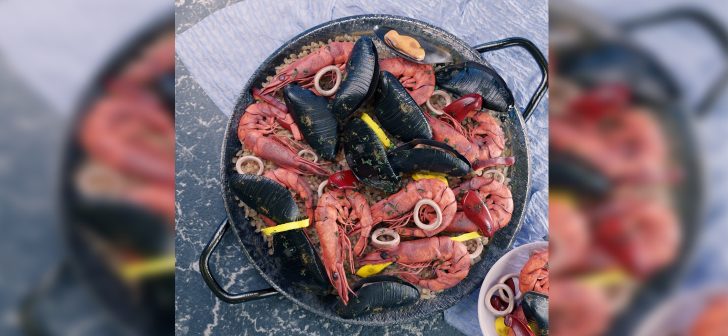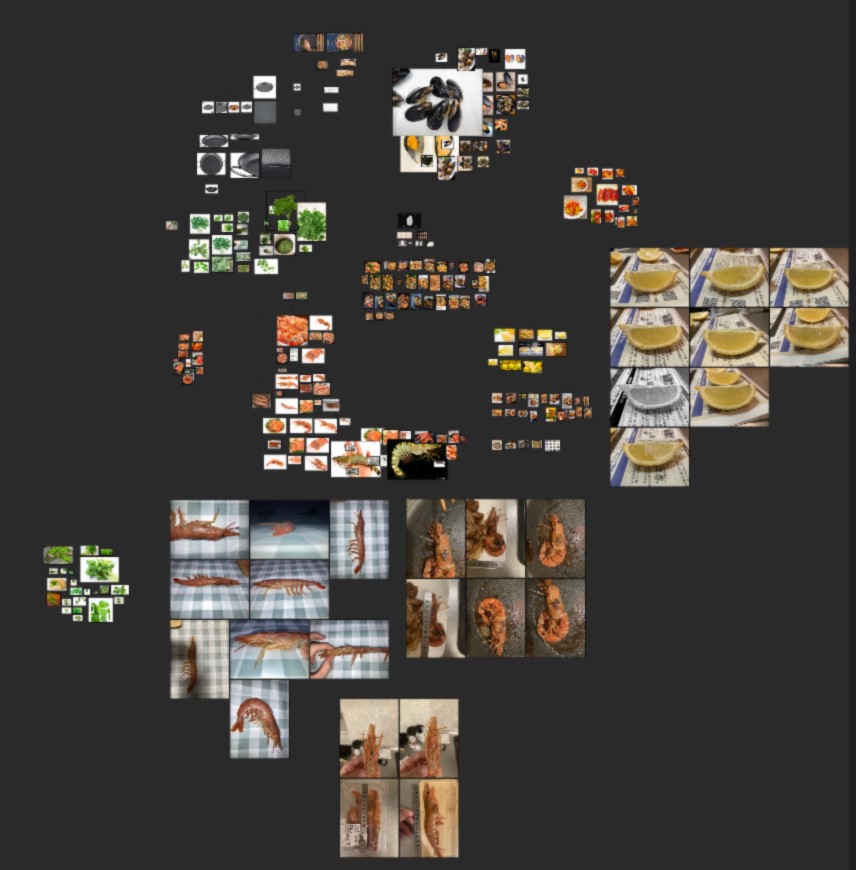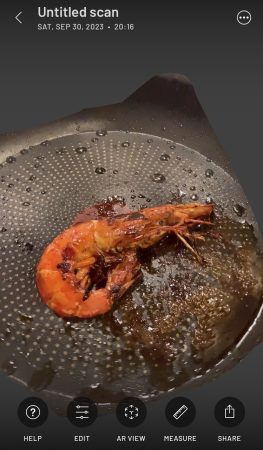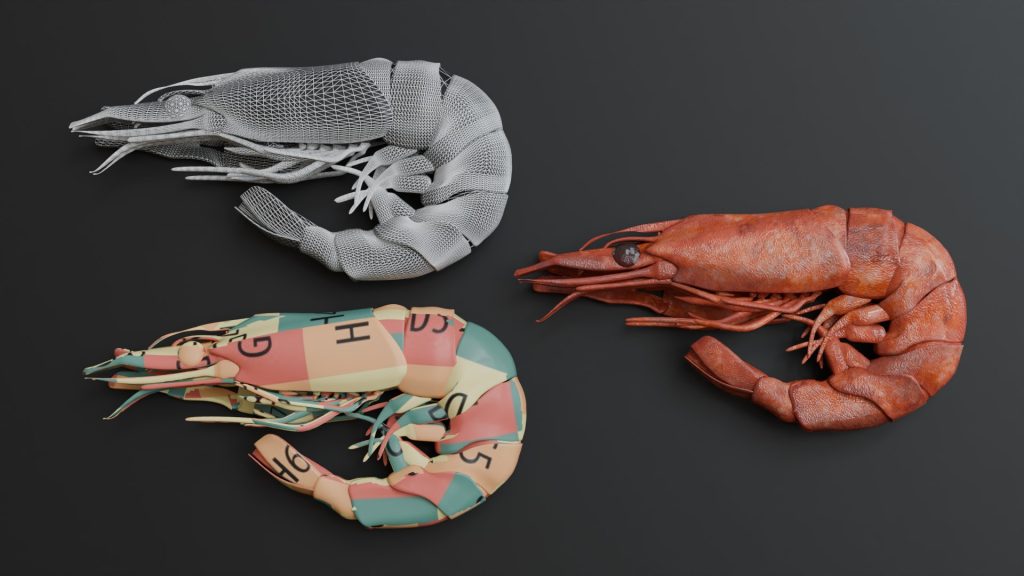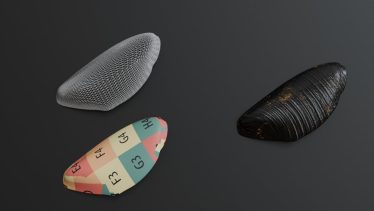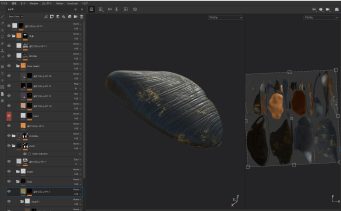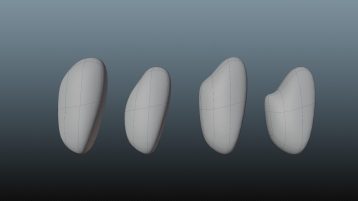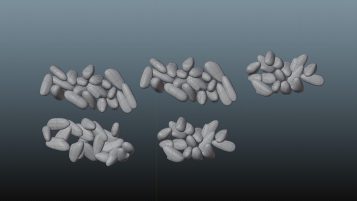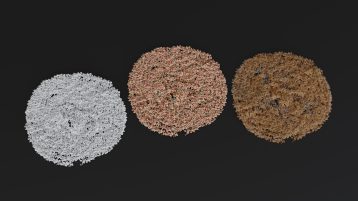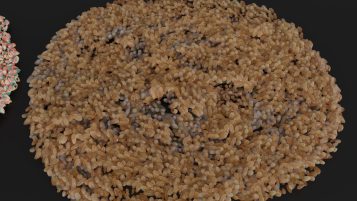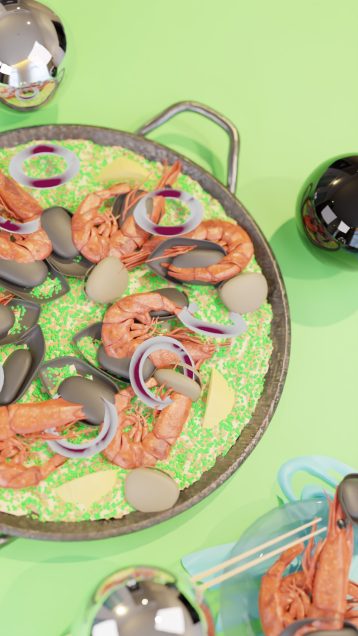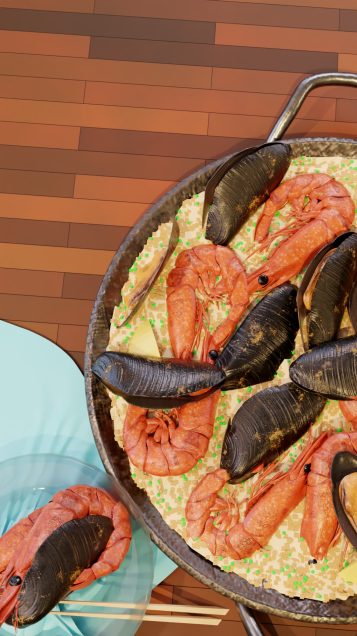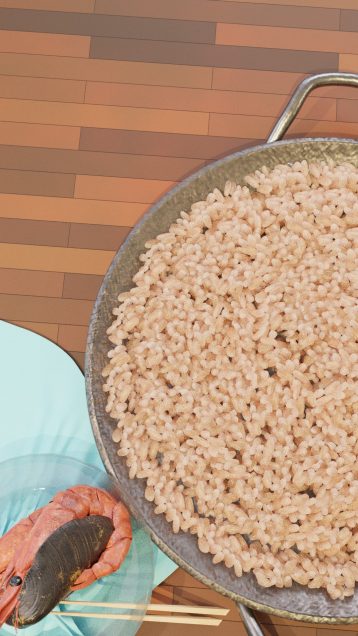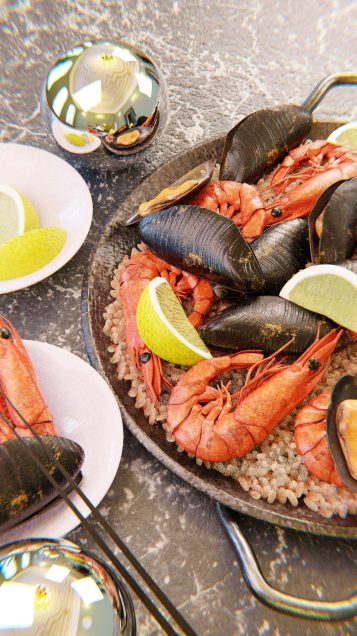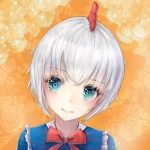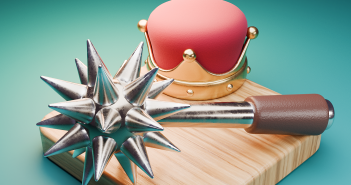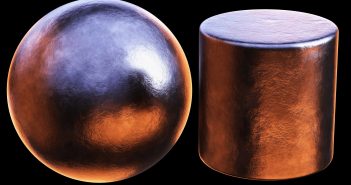INTRODUCTION
Hi, my name is Hattori Kaoru. I'm a CG artist from Japan, self-taught in creating photorealistic and artistic CG works with a focus on "food."
I met Blender when I was 17 years old, which was 7 years ago. I've been able to continue creating CG works thanks to the cooperation of the ever-evolving Blender developer and mutual help community, especially BlenderJP and BLUGJP members. I would like to take this opportunity to thank them.
In addition to artistic production, I also develop Blender add-ons to support graphical production and write a coterie magazine explaining add-ons.
Add-on to bridge Blender and AffinityPhoto v2.-AffinityBridge Addon
Books to read before developing a Blender Addon. (This is still in the process of being written.)
INSPIRATION
First, this work was created to enter the "CG Gohan2 (CGごはん2)" competition in Japan.
“Think about the theme”
Since the theme was "Food made with CG," I thought about the type of food I would produce. This is the result of the last CG Gohan competition, and I was greatly influenced by the works showcased here.
Among the many different cuisines that exist in the world, we chose paella for the following reasons:
- I wanted to make a complete dish on one plate.
- I wanted to make foreign food, not Japanese food.
- Cooking with rice (I originally studied rice material.)
This was a very easy decision.
The next step was to "imagine the scene".
This involves "a post about a trendy Spanish restaurant that's been trending on Instagram." I used many dishes from Instagram, Pinterest, and X (formerly Twitter) as references in creating my work.
In making paella in CG, I learned how to cook it by watching videos on "how to make paella" posted on YouTube.
REFERENCING
PureRef
I used PureRef to compile a complete image of the entire project and a reference of the ingredients.
This is a screenshot of PureRef (It has been blurred because of copyright issues).
Canon KissM2
For some of the ingredients, references were collected using a mirrorless SLR camera.
This was necessary because there were few references available.
PHOTOGRAMMETRY
Unlike inorganic materials, organic foodstuffs have an expiration date (freshness). To grasp this information, I used photogrammetry as a reference. This is simple photogrammetry since my iPhone does not have LiDAR. (If you have a device with LiDAR, I believe that is the best way to go.)
Scaniverse
Scaniverse is an iOS application that makes photogrammetry easier.
You can easily do photogrammetry on iPhones without LiDAR. It has easy FBX and OBJ export options, so you can easily export to Blender, or any other software.
Meshroom
Meshroom also creates point cloud data based on continuous image data for creating 3D models. I used it to scan the shrimp, aiming to preserve the most detail.
Even though it takes longer to output than Scaniverse, it has a higher accuracy rate.
MODELING & TEXTURING
Modeling was done with reference to images collected in PureRef and 3D data created by various scanning software.
Block-Out
First, I considered the placement of objects in the blockout phase and created a simple material using the Principled BSDF.
Next, individual models were created using Blender. Concurrently, Substance Painter was used to apply textures.
Shrimp
Shrimps have intricate details. In order to prepare a three-dimensional reference, we utilized photogrammetry, as described in the previous section.
The output (final render) is a still image, and it is not intended to be animated. However, the shrimp are rigged because the way they curl up and the way their limbs bend vary depending on the individual shrimp. Also, as you can see from the image, VectorColor is used as a mask when the material is created in Substance Painter.
Mussels
Mussels are very simple models.
I really wanted to include the entrails of the shellfish, but I omitted them because I did not have time to do them before submission.
To hide this, the objects were placed in a way that the shells are visible without showing the contents as much as possible.
Pot
This is a model of a paella pot. The pot is used to cook rice, and the dirt is applied according to the position of the rice.
Rice
- Based models
- Lump of rice
- Model of rice on the pot
- Create a base model of a grain of rice
- Create a cohesive grouping of rice grains
- Placement of the rice was done by hand (Because the work time was short…)
I would have liked to simulate rice with PBD applied if I had no work time constraints.
Parsley
These leaves are sprinkled throughout the dish. The actual dried and powdered parsley was photographed from above, and modeling was done based on this.
The leaf placement was done utilizing the DropIt add-on.
Objects duplicated by the particle system are turned into individual objects and placed along the dish using the DropIt add-on.
Minor corrections (angle, etc.)
When the shrimp and paella pot models were replaced, the mussel model was also replaced, and camera angles and lighting were changed.
The rice model was replaced because the size of the rice grain was large. Additionally, lemon models were added, and there were changes in camera angles and lighting.
I had to redo camera angles and object placement many times.
RETOUCHING
After minor modifications, the result is as shown below.
The images were retouched using Affinity Photo V2.
And that was it! Below is the final render, I hope you like it.
RENDER : Paella
Thanks for reading this far. Unfortunately, this work did not win the contest. Still, I am proud to have been able to present my work on such an occasion.
Have a nice day!
About the Artist
Kaoru Hattori is a self-taught CG artist in Japan. Although he specializes in food CG production, he also creates add-ons for production assistance.


